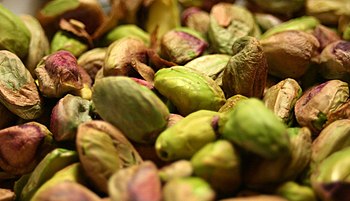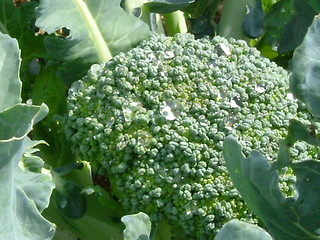“We are what we eat”, or so the saying goes - which is why the foods you eat are so important to your health. Different foods help our bodies to grow, to heal, and to keep the immune system running properly. More than that, they stop our bodies from falling apart: the absence of many different nutrients can lead to various physical ailments.* It’s really important to eat healthily - and fruits and vegetables are some of the healthiest foods you can eat, so let’s look at five of the best fruits and vegetables to include in your diet.
|
|
| Broccoli (Photo credit: wanko) |
Broccoli: Green vegetables are widely considered among the healthiest foods we can eat, and broccoli is definitely one of the most nutrient-rich green vegetables. It’s a great source of vitamins C and K, as well as folate, vitamin B and fiber. In addition, it contains potassium, vitamins B1, B2, B3, B5 and B6, protein and calcium.
Broccoli can assist in lowering cholesterol levels which improves cardiovascular health. It supports the body’s detoxification system, aids vitamin D uptake and may also reduce our susceptibility to certain allergies.
Spinach: Spinach is one of the best green vegetables for your health. It contains a huge quantity of nutrients, and offers several specific health benefits. Among the most concentrated nutrients are magnesium, folate, iron, potassium, calcium, vitamin E, protein and zinc.
Spinach may help reduce the risk of developing aggressive prostate cancer. It’s also an anti-inflammatory, meaning it may help reduce our susceptibility to allergies. The vitamin K, magnesium and calcium content of spinach is good for maintaining healthy bones and there are also antioxidants in spinach that help remove harmful free radicals from the body.
Peas: Green peas are another fantastic source of nutrients. They contain a huge range of nutrients in high quantities, including manganese, fiber, vitamin K and C, phosphorus, protein, copper, iron and zinc.
Peas can help to regulate blood sugar levels thanks to their fiber and protein content. Fiber and protein slow down the pace of digestion, which also means that carbohydrates are digested more slowly too. Peas are also known to reduce the chance of developing cardiovascular disease and to help protect against stomach cancer.
Blueberries: Blueberries have a low glycemic index (GI) which
means they have a low impact on our blood sugar levels., so you won’t
get a sugar rush from eating blueberries. Eating foods with a low
glycemic index is also believed to reduce the risk of developing type-II
diabetes as well as coronary heart disease.
Blueberries
are also a very rich source of antioxidants, which are thought to help
reduce the risk of developing cancer. They are a good source of vitamin
K, manganese and vitamin C too, placing them high on the
nutrient-density scale.
Apples: Apples are a fantastic source of fiber which helps promote a healthy digestive system. This also aids in the regulation of blood sugar levels. They are also a great source of vitamin C. Although apples aren’t as nutrient-rich as some other fruits and vegetables, they are thought to have both anti-cancer and anti-asthma properties. In addition, they’re good for cardiovascular health.
*Please Note: Information on this blog is for informational purposes only, and should not be taken as medical advice. Health claims above are not verified by the FDA.








